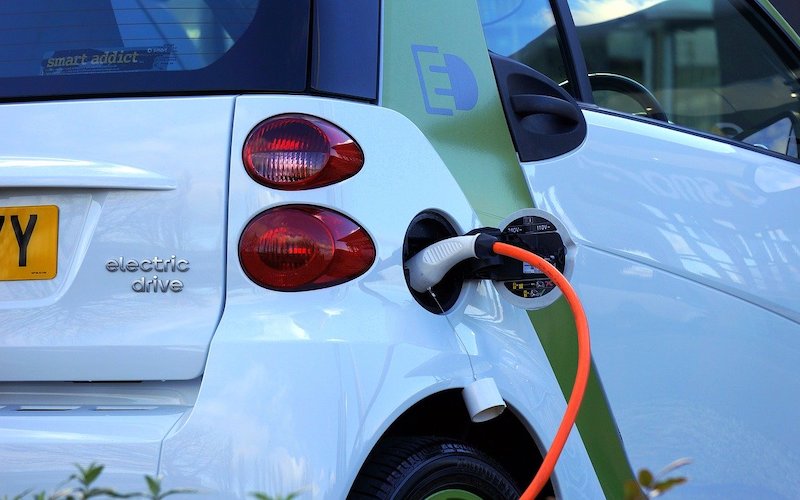There is a very good chance that you are reading this exact sentence on a smartphone, tablet, or laptop. If so, you have Stanley Whittingham to thank for that. The first to develop the lithium-ion battery back in the 70s, Whittingham paved the way for technologies that we use everyday – smartphones and electric cars – in addition to a more sustainable world. Solar and wind plants need battery storage for when the sun isn’t shining or the wind dies down, and that’s where the lithium-ion battery comes in.
In 2019, Whittingham was honored with a Nobel Prize in Chemistry for the 50 years of work he’s done on the world-changing lithium-ion battery. We had the opportunity to speak with Whittingham about his early work and how he feels the lithium-ion battery is changing and will continue to change the world.
Innovation & Tech Today: In your own words, could you briefly explain the idea behind the lithium ion battery?

Stanley Whittingham: Lithium-ion batteries. It’s really a battery about double or triple that of the nickel-based battery, and about five times that of lead acid. So, there’s a huge incentive to develop such batteries and they essentially have two electrodes. These electrodes contain lithium. In the lithium-ion battery, there should be no metallic lithium. So, all one does is shuttle lithium-ions from one side to the other.
I&T Today: Could you tell me about those early days, in the 70s, when you were first developing the lithium-ion battery?
Stanley Whittingham: Those were great days. You are probably aware industry is very different then than it is now. Exxon, Dunlap, DuPont, IBM, GE, all had large corporate labs. When I joined Exxon that was maybe a year old and our charter was to study anything energy related, providing it was not petroleum or chemicals. We were looking at energy storage and Exxon wanted to get into the electric vehicle business at that time.
So, we started looking at batteries, looking at how they might work. Then we got this idea of what we call intercalation reactions, which is what I was discussing a bit earlier, where you can insert lithium-ions into some other material. Then just shuttling the lithium-ions from one side to the other. And we found that those reactions could store a lot of energy…
So we made the initial discovery and I went to New York and met with the committee of the Exxon board and gave them a five or 10 minute talk – I don’t remember all the exact details – but what you’d call it an elevator speech these days, I guess.
And they were very interested. They treated research much like drilling oil wells; maybe 10-percent would be successful. So they invested in building an engineering group and, in the end, also a manufacturing facility. In 1972 or 73, we filed patents, got those patents. We started building cells that would recycle hundreds of times, and then eventually they started building batteries. I think, the first time we really disclosed to the public what was going on, was about 1976, 77. They showed the batteries at an electric vehicle show in Chicago.
Related: Solid-State Batteries: The Next Generation for Electric Vehicles
I&T Today: When you first started working on this project, did you ever imagine that lithium-ion batteries would be as ubiquitous as they are now?
Stanley Whittingham: No. I don’t think we realized that for a long time because there were really no, I would say, serious electronic toys in those days … We were interested in electric vehicles. I don’t think the grid was on our horizon then. We dreamed of electric vehicles, but I don’t think we really… It would have been almost impossible to imagine what actually happened.
I&T Today: How have you seen this technology develop over the last 50 years, from where you started into what it is now?
Stanley Whittingham: So, Exxon stayed in it until early the mid-1980s. They then decided the market wasn’t big enough for them, and they sold the technology to the Japanese. As you probably know, 90-some odd percent of all lithium-ion batteries are now made in Asia. And it was a comment made, when the Nobel Prize was announced, I said, “Here we go again. Another Nobel Prize, but no commercialization.”
Though, I think the disappointment, it was, U.S. Industry was not really interested in investing money over say, a 10 year period, to make a commercial product as Sony was certainly then, a vertically integrated company. So they had the precursors of the Walkman, but they wanted batteries, so they were going to build themselves a battery company to make the batteries for their own devices.
I&T Today: Why is this technology so important? Why should people be paying attention to the lithium-ion battery?
Stanley Whittingham: Well, first you wouldn’t have any smart phones. Do remember when the first cell phones came out? You basically needed a briefcase to carry it in. And the first ones used nickel-metal hydride batteries and they were maybe about an inch thick and kind of clamped on the back of the phone. So, no, the lithium-ion batteries made [the smartphone] viable. It made today’s portable computers viable. Without the lithium-ion batteries, you wouldn’t have Tesla.
I mean, as you probably know, in this country, there’s a fair amount now of grid storage and … 94-percent of that is now lithium-ion batteries. Sensi, all portable storage except the old lead acid battery and lots of fixed storage is now dominated by lithium-ion.
I&T Today: How did it feel to be honored for something that you’ve been working on for nearly 50 years?
Stanley Whittingham: I’d say it was a great feeling. I was somewhat overwhelmed by it. I was in Germany, when they called me up, at a big battery meeting, which was very appropriate… It’s been great for the field. It’s great for everyone who’s been involved, but, no, it’s been hundreds of people who made this happen.
But, the Nobel Committee picked out a logical sequence. I came up with a concept and John [Goodenough] really came up with the kind of material that made a commercial success. We should have a sizable number of, I’d say, companies before Sony actually built the battery. But none of them, as far as I know, made any money.
I&T Today: How do you think the lithium-ion battery has changed the way we think about energy?
Stanley Whittingham: Let’s take one step back because, one thing it has done, you look at third world countries, they’ve jumped over having telephone wires and telephone poles. They’ve not got any hard wired telephones, so they went straight from nothing to cell phones. As far as transportation goes, it’s really a huge push now to go more electric. I was just appointed by the Governor of New York State last week to head up a task force to see how New York could go even faster.
He wants half the buses in New York State to be electric within the next seven or eight years and all of them within the next 10 or 15 years. I think that you can see a big change that particularly – my suspicion is major cities – New York, Chicago, San Francisco, eventually are going to ban internal combustion engines. It’s clearly going to take over there, I think, bus fleets are going to switch over. I’ve never understood why the postal service hasn’t a switched to all electric. Would save them, in the end, a lot of money.
I&T Today: What is the renewable energy potential of lithium-ion batteries?
Stanley Whittingham: There’s solar plant being built in Southern California. I think it’s going to have lithium batteries of 400 or 500 megawatt hours, initially. They’ve got the okay to go to one gigawatt hour. That’s huge. That’s almost as big as some of the largest pumped hydro reservoirs in the U.S. And I tell you what, you’re going to see more of these grid storage on a local level, covering half a dozen streets and things like that to get them resiliency.
I&T Today: What applications excite you or make you the most proud of your work?
Stanley Whittingham: I’m hoping that it’ll help close down all the dirty coal power plants, in the U.S.
About 2010, they bought a lithium storage facility about two miles from where I am now. About a year later, the adjacent coal plant was turned offline and has never started up again.
The dirtiest plants, “peaker plants,” they may only operate five, 10-percent of the time. So those are ideal for batteries to take over. I know clearly, we’re going to have a lot of solar in places like Hawaii, Arizona, California. You need big batteries for those to provide electricity during the nighttime when the sun isn’t shining. There’s no question renewable energy needs batteries, and batteries will help renewable energy grow much faster than it would otherwise.
I&T Today: Do you have any advice to the younger generation out there, those who might want to grow up to be great innovators?
Stanley Whittingham: First, enjoy yourself. You’ve got to be creative and not afraid of making mistakes. If you’re so conservative that you don’t make any mistakes, you probably won’t make any breakthroughs.
And I don’t remember the actual quote, but Einstein has a quote simply saying, “You can know everything in the world, but if you’re not creative, you won’t go anywhere.”











